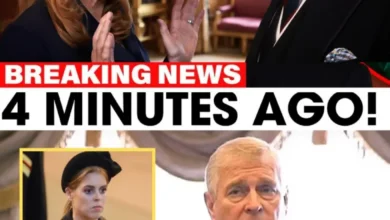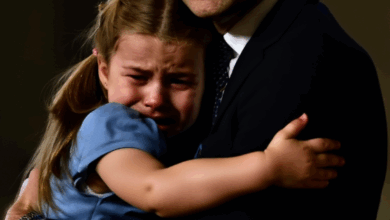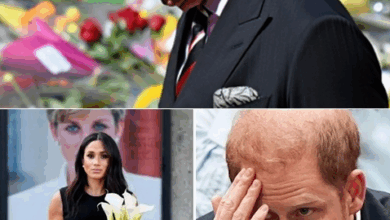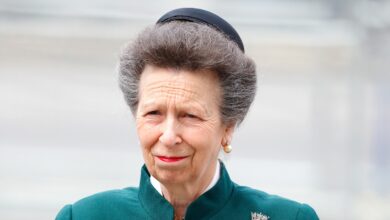Inside Balmoral: The night news broke about Princess Diana’s death…revealed

Balmoral Castle, August 31, 1997
In the pre-dawn hours of August 31, 1997, Balmoral Castle, the British royal family’s Scottish retreat, stood cloaked in the stillness of a late summer night. Nestled amidst the rugged beauty of Aberdeenshire, its granite walls and tartan-draped rooms were a sanctuary of tradition, far from the frenetic pulse of London. But at 4:01 AM, as a phone call from Paris pierced the quiet, the world of the monarchy shifted irrevocably. Princess Diana, the incandescent figure who had both illuminated and challenged the House of Windsor, was dead. In the corridor of the castle’s private quarters, a royal aide later recalled a single, haunting sound: the sharp crack of a teacup shattering against the stone floor. In that moment of silence, the monarchy faced its darkest hour—not from enemies abroad, but from a grief that erupted within its own walls.

Balmoral, with its turrets and sprawling heather moors, had long been the royals’ escape, a place where protocol softened and family life took precedence. That August, Queen Elizabeth II was in residence with Prince Charles, their sons William (15) and Harry (12), and a small retinue of staff. Diana, divorced from Charles since 1996, was no longer a working royal, but her presence lingered—her image splashed across tabloids, her romance with Dodi Fayed fueling endless speculation. The boys, spending their summer holiday with their father, were shielded from the media storm. Yet, as the castle slept, a tragedy was unfolding 600 miles away in Paris’s Pont de l’Alma tunnel, where Diana’s Mercedes had crashed at 12:23 AM, pursued by paparazzi.
The first reports reached Balmoral around 1:00 AM, relayed through secure channels from the British embassy in Paris. Initial accounts were grim but uncertain—Diana was critically injured, Dodi Fayed and driver Henri Paul were dead, bodyguard Trevor Rees-Jones was clinging to life. Charles, awakened by his private secretary, Stephen Lamport, absorbed the news in his dressing gown, his face ashen. The Queen, informed soon after, remained composed, her decades of stoicism a reflex. But the castle’s atmosphere grew taut as updates trickled in. By 3:00 AM, as doctors at Pitié-Salpêtrière Hospital fought to save Diana, prayers were whispered in Balmoral’s private chapel, where the family had gathered only days earlier for Sunday service.
At 4:01 AM, the final call came: Diana had succumbed to massive internal injuries, her heart irreparably damaged. The news landed like a physical blow. The aide’s recollection of the shattered teacup—dropped by an unnamed staff member in the corridor outside the Queen’s apartments—crystallized the moment’s raw shock. It was not just the loss of a life, but the unraveling of a delicate balance. Diana, at 36, had been the monarchy’s brightest star and its fiercest critic, her candor about royal life exposing fault lines within the institution. Now, her death in a blaze of paparazzi flashes threatened to ignite public fury.
Inside Balmoral, the immediate concern was the princes. William and Harry, asleep in their rooms, were unaware of the catastrophe. Charles, grappling with his own grief as Diana’s former husband, faced the unbearable task of telling his sons their mother was gone. According to accounts later shared by royal biographer Ingrid Seward, he delayed until morning, wanting them to have one last night of innocence. The Queen, ever the matriarch, insisted the boys attend church at Crathie Kirk as planned, a decision later criticized but rooted in her belief that routine could anchor them. At 8:30 AM, as the family walked to the service under a gray Scottish sky, William and Harry were told only that their mother had been in an accident. The full truth came later, in a private moment with their father, as tears replaced words.
The castle’s staff, meanwhile, moved like ghosts, their usual efficiency undercut by disbelief. The teacup incident, though minor, became a whispered anecdote among aides, a symbol of the moment protocol cracked. Housekeepers tidied the shards, but the sound echoed in memory—a rare breach in Balmoral’s ordered world. The Queen’s private secretary, Robert Fellowes, whose wife Jane was Diana’s sister, was devastated; his composure faltered as he coordinated with Downing Street and Paris. Phone lines hummed with urgent calls to Prime Minister Tony Blair, who was crafting a public response, and to Kensington Palace, where Diana’s butler Paul Burrell was already fielding press inquiries.

Outside Balmoral’s gates, the world was waking to the news. By 5:00 AM, BBC broadcasts had interrupted regular programming, and crowds began gathering at Kensington Palace, leaving flowers and notes. But within the castle, a cocoon of silence prevailed. The Queen, wary of the media frenzy, ordered televisions and radios kept off to protect the boys. This decision, meant to preserve calm, later fueled accusations of royal detachment. When Blair’s speech at 11:00 AM coined the term “People’s Princess,” it resonated with a grieving public but jarred with the palace’s restraint. The monarchy, already strained by Diana’s 1995 Panorama interview exposing Charles’s affair and her struggles, now faced a tidal wave of public emotion it was ill-equipped to navigate.
The days that followed at Balmoral were a study in tension. The Queen, guided by duty, prioritized her grandsons’ well-being over public appearances. Charles, torn between personal loss and royal obligation, flew to Paris to retrieve Diana’s body, a journey he later described as “surreal.” William and Harry, shielded from newspapers, spent hours walking the moors or fishing in the River Dee, their grief private but palpable. Staff noted Harry’s quiet questions about his mother’s final moments, while William, older and more reserved, internalized his pain, a trait that would mark his later reflections in Spare.
By September 5, as floral tributes buried London’s palaces and public criticism of the Queen’s absence grew, Balmoral’s isolation could no longer hold. The royal standard, never lowered for Diana in life, remained aloft—a protocol that enraged mourners. The Queen, persuaded by Blair, returned to London, delivering a rare televised address on September 6, her voice steady but eyes betraying sorrow. “As your Queen and as a grandmother,” she said, “I feel the same grief.” The speech, coupled with her public walkabout among the flowers, began to mend the rift, but Balmoral remained the crucible where the crisis was first absorbed.

The shattered teacup, a fleeting detail, lingered as a metaphor. It was not just porcelain that broke that night, but the illusion of an unassailable monarchy. Diana’s death exposed its vulnerabilities—its struggle to reconcile tradition with a modern, emotional public. Balmoral, for all its grandeur, could not shield the Windsors from the weight of her loss. The castle’s silence, once a refuge, became a mirror, reflecting a family and an institution forced to confront their own humanity.
In the years since, Balmoral has remained a private haven, its role in that night rarely discussed. Harry, in Spare, recalls the castle’s “cold comfort” during those days, its vastness amplifying his loneliness. William, now Prince of Wales, has returned with his own children, continuing the tradition of summer retreats. But the echo of that teacup, sharp and fleeting, endures—a reminder of the night grief cracked the royal facade, leaving scars that time has yet to fully heal.




